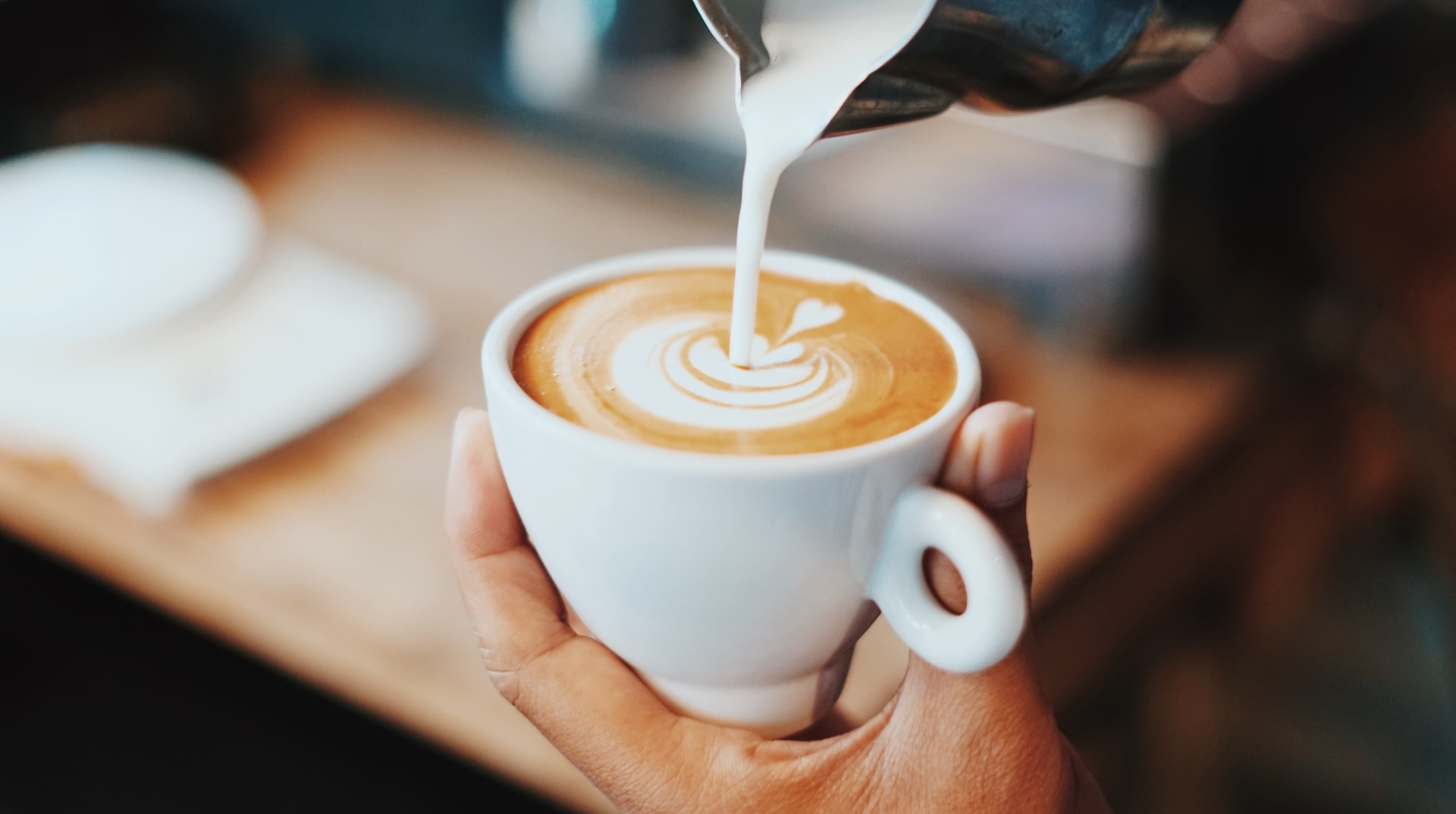Welcome, dear reader! We are about to delve into an exciting caffeine-infused debate: does cold brew boast more caffeine than a latte? From the rich, creamy lattes to the strongly brewed and refreshing cold brews, each method has its fans and its unique flavor profiles.
But today, we aren’t talking about which one tastes better. Instead, we focus on their caffeine content, a topic that has stirred quite a few discussions among coffee enthusiasts and baristas alike worldwide.
Is your morning cup of cold brew more likely to jolt you awake, or does a latte pack a punch? Buckle up because we’re about to find out!
Table of Contents
Remember, the amount of caffeine in your cup of coffee doesn’t just depend on the type of coffee but also on how it’s brewed, and the coffee-to-water ratio used. It’s a complex matter, but don’t fret – we’re here to simplify it!
What is a Latte?
A latte, short for “caffè latte,” is a beloved coffee beverage that hails from Italy. At its most basic, a latte consists of three key ingredients: espresso, steamed milk, and milk foam.
The process begins with brewing a shot or two of rich, dark espresso. This robust coffee is then combined with hot, steamed milk, generally in a ratio of one part espresso to two parts milk. The drink is topped off with a dollop of creamy milk foam, which not only adds to its aesthetic appeal but also lends a delightful texture to each sip.

One of the charming features of a latte, apart from its alluring taste, is its versatility. Baristas often incorporate flavors like vanilla or caramel, or sprinkle cocoa or cinnamon on top, providing a customizable experience for coffee enthusiasts. Perhaps that’s why the latte has become a signature offering in many coffee shops worldwide.
An In-Depth Look at the Caffeine in a Latte
Each cup of latte you consume typically contains between 63 to 126 milligrams of caffeine, depending on several factors such as the type of beans used, brewing technique and overall serving size, among others. It’s essential to bear in mind that a latte comprises espresso shots, which is an intense coffee brewing method that extracts maximum caffeine from the beans.
Even though a latte involves adding steamed milk, which dilutes its caffeine concentration, its caffeine kick is not to be underestimated.
Moreover, variations in the preparation of a latte can influence its caffeine content. For example, using robusta coffee beans instead of the popular arabica variety can result in a drink with almost twice as much caffeine. The number of espresso shots you prefer in your latte also plays a decisive role. On average, a single shot of espresso contains about 63 milligrams of caffeine, so a double-shot latte would contain roughly 126 milligrams.
Furthermore, lattes served at coffee chains can often contain more caffeine than home-brewed versions due to larger serving sizes and differences in brewing processes.
For instance, a venti latte at Starbucks, with its generous serving size and custom coffee blend, can deliver a whopping 150 milligrams of caffeine. Hence, not all lattes are created equal when it comes to caffeine content.
Read: How Much Caffeine Content is in Cold Brew Coffee?
Does Cold Brew Have More Caffeine than a Latte?
The answer to this million-dollar question that most coffee enthusiasts wonder about isn’t as straightforward as you might think. The amount of caffeine present in your iced cold brew is influenced by several factors:
Firstly, the concentration level of your cold brew largely depends on the coffee-to-water ratio used when brewing. A higher ratio will result in a more concentrated brew, translating into a higher caffeine content. A typical cold brew coffee is stronger than a standard brew because it usually has a higher ratio of coffee to water.
However, what matters the most here are the coffee beans. The species of coffee, their origin, the process of roasting, and the grind size all profoundly impact the caffeine content.
Arabica beans are commonly used in most coffees worldwide, including lattes and cold brew, and they typically contain less caffeine than their Robusta counterparts. If your cold brew uses Robusta beans, it could have more caffeine than a latte made with Arabica.
| Type of Coffee | Type of Bean | Average Caffeine Content |
|---|---|---|
| Latte | Arabica | 95mg |
| Cold Brew | Arabica | 200mg |
| Latte | Robusta | 120mg |
| Cold Brew | Robusta | 250mg |
The method of preparation also plays a significant role in the caffeine content of your preferred caffeinated beverage. Cold brewing involves steeping the coffee grounds in cold water for an extended time. This process is known to extract more caffeine from coffee beans than hot brewing methods like the espresso used for lattes.
Lastly, serving size plays a key role too. While a latte usually comes in smaller servings, cold brews are often served in larger quantities, meaning there could be more caffeine simply because of the larger volume.
In summary, generally, a cold brew does tend to have a higher caffeine content than a latte due to various factors such as the brewing method, coffee-to-water ratio, type of coffee bean, and serving size. However, this isn’t a fixed rule, as caffeine content can vary considerably depending on how each beverage is prepared.
Conclusion
In wrapping up this comparison, it’s evident that both cold brew coffee and a latte can adequately feed your caffeine cravings. However, the significant factor that determines the amount of caffeine in each drink boils down to concentration and brewing methods.
Generally speaking, cold brew tends to have more caffeine due to its longer steeping process.
Still, remember that these caffeine levels can vary widely, depending on factors such as the type of coffee beans, the brewing method, and even the water temperature. Also, let’s not forget the personal taste. Some might prefer a smooth and full-bodied cold brew, while others enjoy the comforting richness of a latte. There’s no right or wrong choice here – it’s all a matter of preference.
That being said, it’s crucial to keep your caffeine intake in check for your health’s sake. As the old saying goes, too much of anything is bad.
In the end, whether you’re a cold brew enthusiast or a latte lover, what truly matters is your enjoyment in every sip. So, go ahead, grab your favorite drink, and allow its aroma to fuel your day.


Leave a Reply